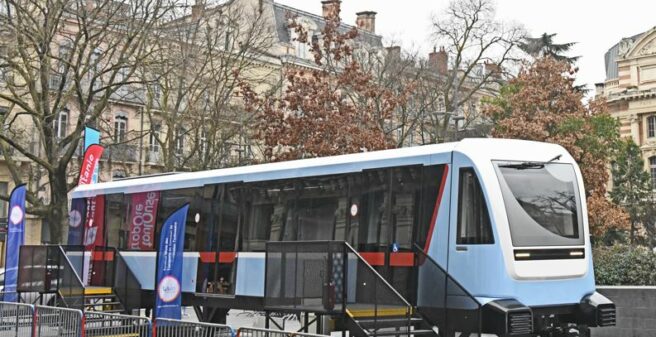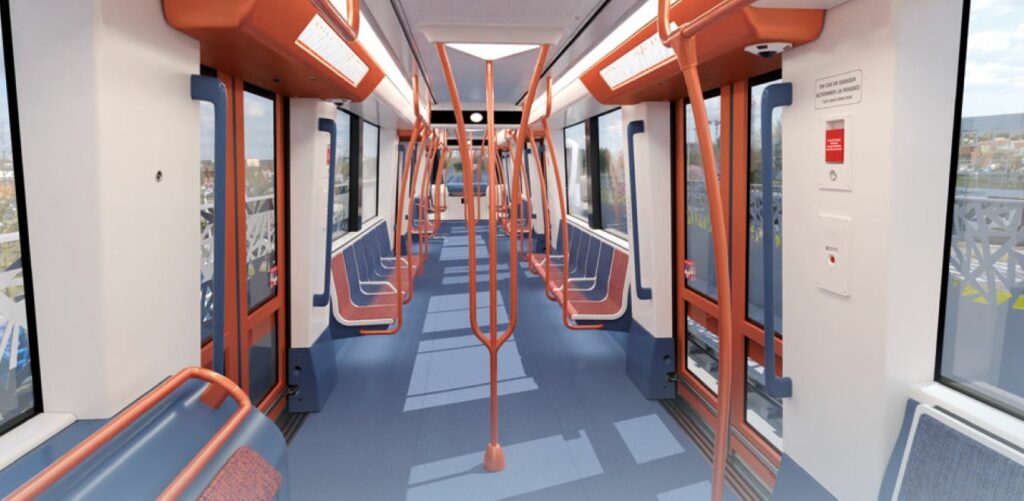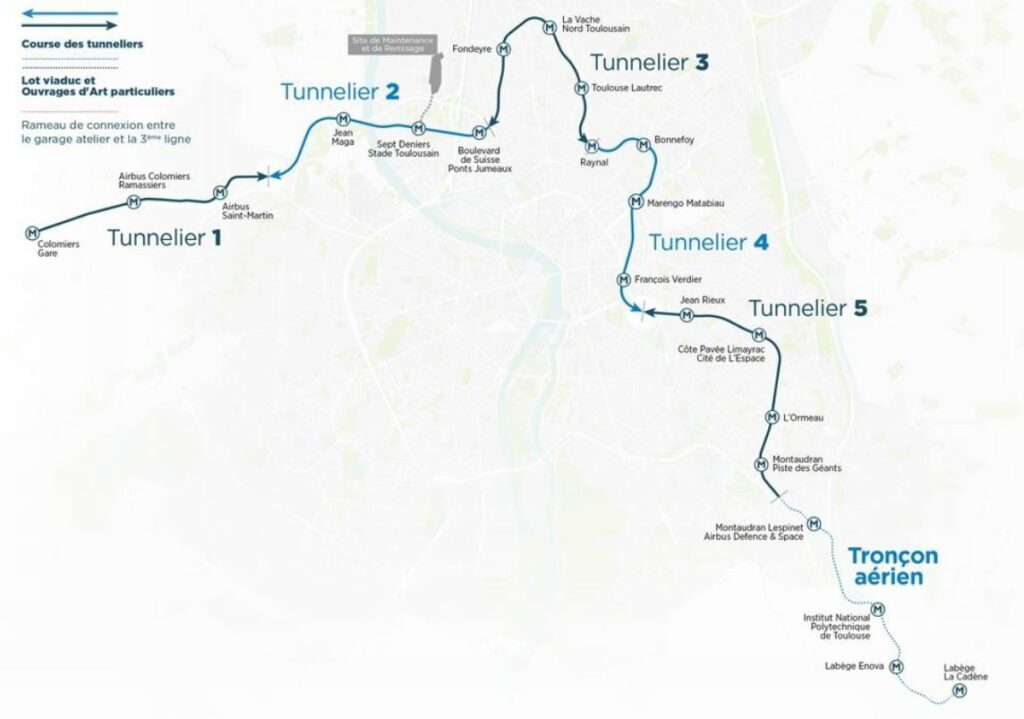
On 26th January 2023, local politicians and representatives of the operator Tisseo and Alstom presented the mock-up of Toulouse’s third metro line C which is currently under construction. It is displayed in front of the city’s townhall Capitole until February 9th. The mock-up is representing one car with a length of 18.1 m, a width of 3.11 m and a height of 3.85 m. Each of the 27 trains on line C will consist of 2 cars. The transport capacity is estimated at 5,000 passengers per hour and per direction. Each car has 6 access doors (3 per side) with a width of 1.50 m each. There are 2 PRM seats and 6 priority seats per car.

The 2-car units will be built as “Boa” trains, meaning that there is no physical separation between the cars, giving the appearance of a long snake inside. The 36 m trains that can be extended to 48 m by adding one additional car to carry between 286 and 386 passengers. This vehicles have been designed to improve the passenger experience but also to combine performance, energy efficiency and ease of maintenance, in order to control costs throughout its life cycle.
Design and layout for passenger comfort
The design of Toulouse’s new metro line has been developed together by Alstom, design agecy RCP Design Global and the operator Tisséo. The identity of the new metro line is marked by the evocation of the sky, a reflection of the territory and its lights. The front panel has a white surface treatment, contrasting with the contrasting with the “pastel blue” (Toulouse is known for the blue woad plant which was exported to allover Europe in the 16th century thanks to its specific blue color) sides. A solid anthracite surface along the entire length of the train links all the all the side bays of the train. The front of the train is highlighted by a signature light which announces the arrival of the train at the platform. Equipped with a large windscreen, it offers passengers a panoramic view view of the front of the train. The side graphics mark the accesses and create a visual animation and creates a visual animation during the opening/closing sequences of the doors.

The interior design accompanies the passenger on his or her journey by offering simple and effective markers for intuitive use. The grips, seats, support surfaces and surfaces and access doors are treated with different and identifiable colors to mark the different uses.
The curved and splayed bars allow passengers to passengers to stand with several people at the same time. The lighting in the entrance area highlights the tripod bar’s location, flaring out at the top in a “star” shape to allow a large number of to allow a large number of passengers to stand. Four obstacle-free zones allow passengers in wheelchairs to be accommodated.
The volume and contrast of the access door frames make it easier to identify them and to read and the legibility of line information. The associations of people with reduced mobility have been through collaborative workshops at the main stages of the project to the main stages of the project to participate in the definition of this vehicle, with the help of virtual and physical reality models.
The third metro line
After the first VAL metro line was opened in 1993 and the second in 2007, line C is scheduled to follow in 2028. Lines A and B have a total length of 28.1 km and carry over 281,000 people daily. While lines A and B are fully automatic and rubber-tyred Siemens VAL systems, Alstom won the tender for the third line with a conventional steel wheel system. Line C will directly serve the West, North, East and South-East of the Toulouse conurbation, in the municipalities of Colomiers, Blagnac, Toulouse and Labège. The length of this line is approximately 27 kilometres. It is mainly underground (about twenty kilometres) and includes a viaduct at its southern end. The line will have 21 stations (17 underground and 4 overhead) and 18 underground auxiliary structures will be built for its operation.

Construction started on 15th December 2022. The majority of the route will be built by tunnel boring machines; this choice makes it possible to limit the impact of the work on traffic and buildings in an urban environment. The tunnel will be built by machines (tunnel boring machines) which excavate the ground and install a reinforced concrete lining (voussoirs) which prevents the ground from deforming and settling. Five tunnel boring machines will be used to build the entire tunnel linking the future stations in a concomitant and coordinated manner in order to deliver a complete infrastructure.
Tunnel construction is due to be finished by the end of 2027 while the first trains will be delivered for testing in the beginning of 2027 already. Start of operation is planned for 2028. The overall construction cost is 3.4 billion Euros.
Further information on Toulouse’s metro and public transport system can be found here:
https://www.urbanrail.net/eu/fr/toulouse/toulouse.htm

